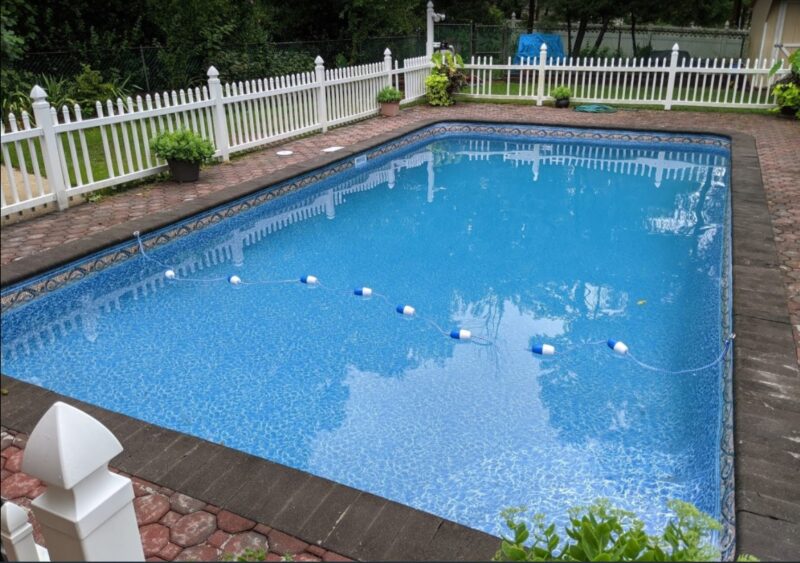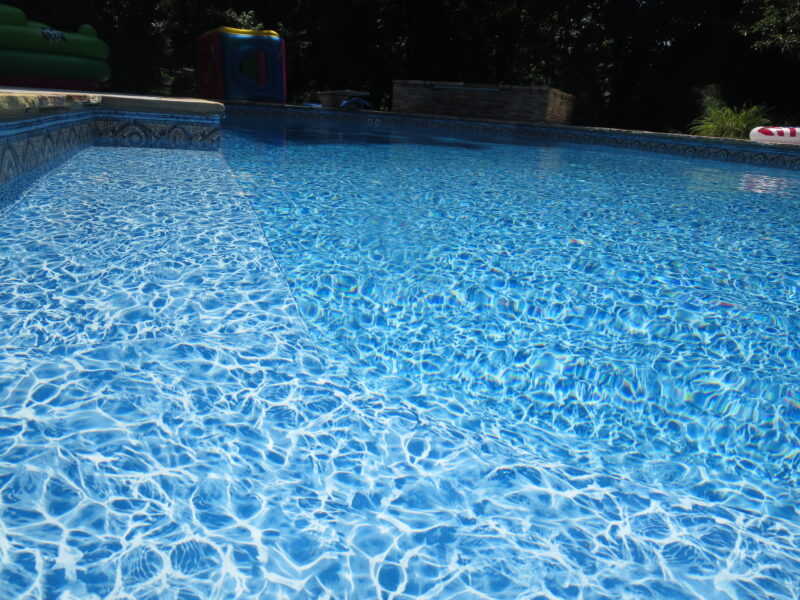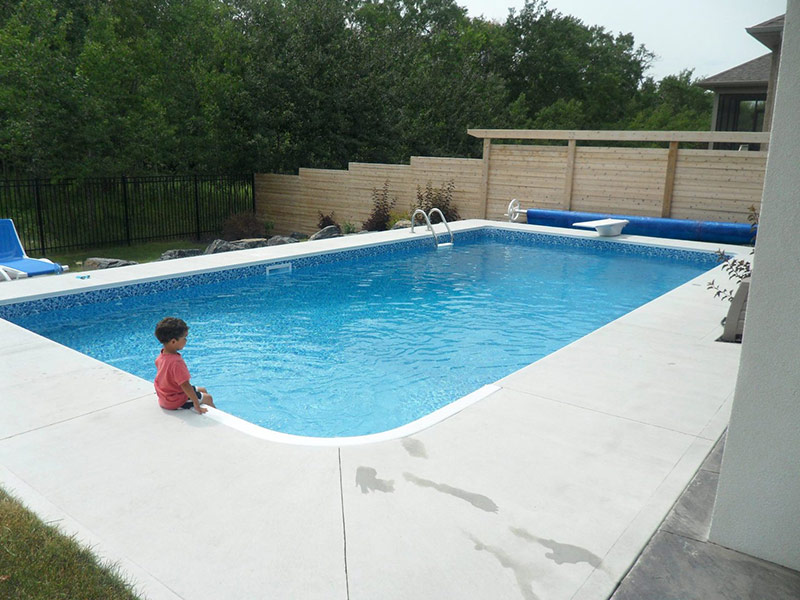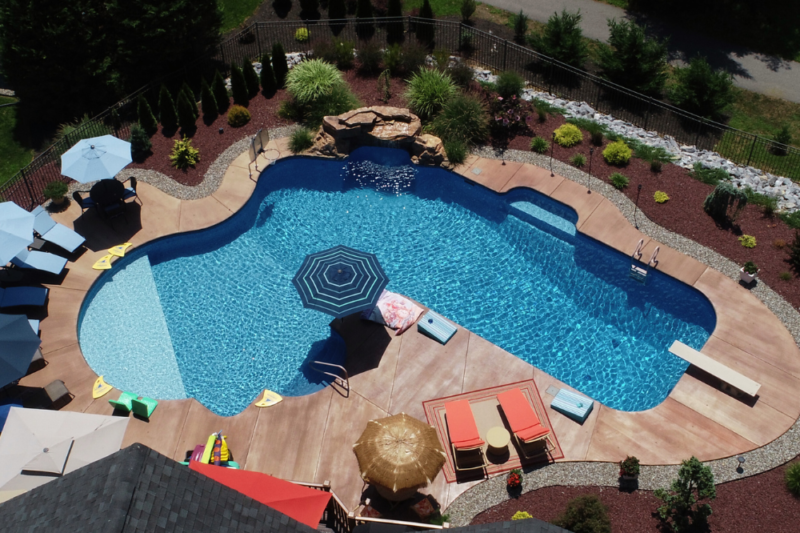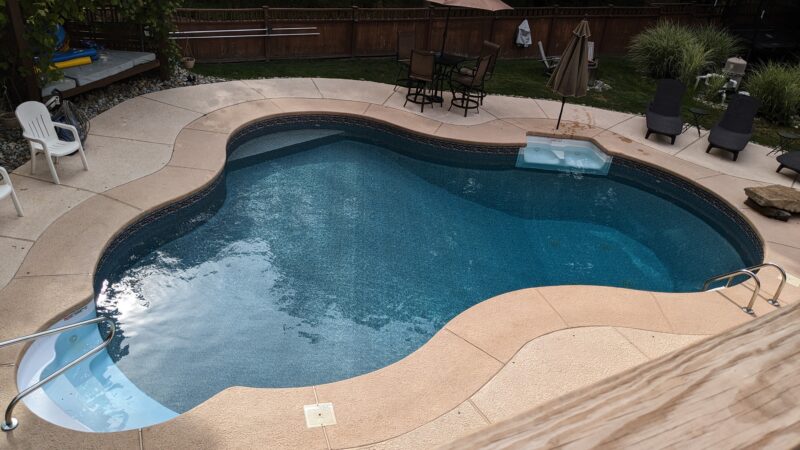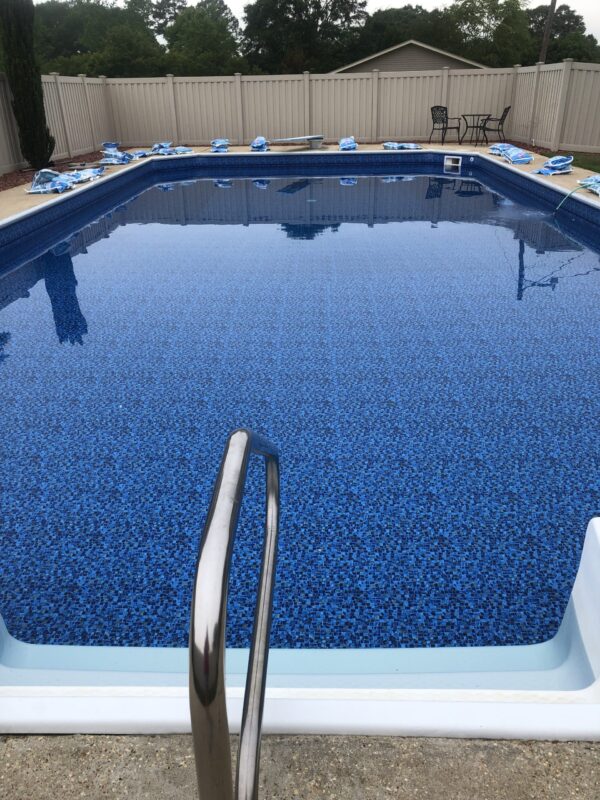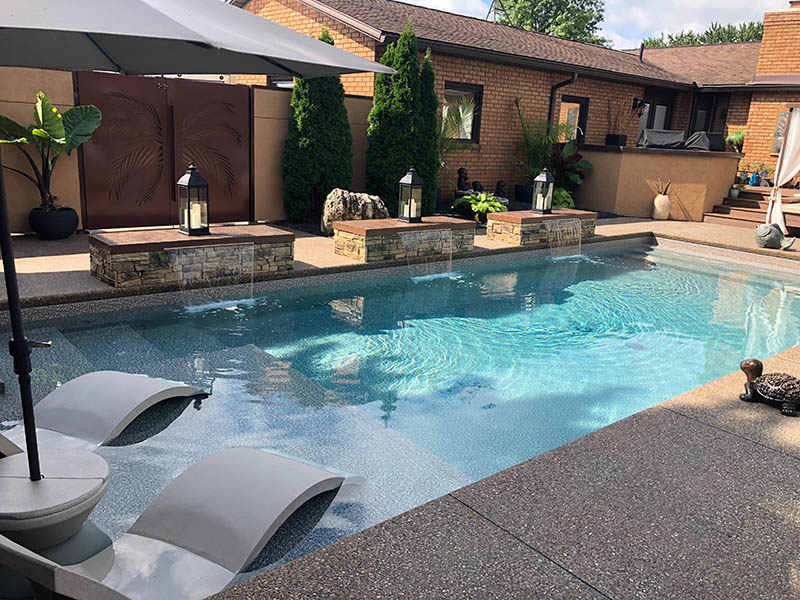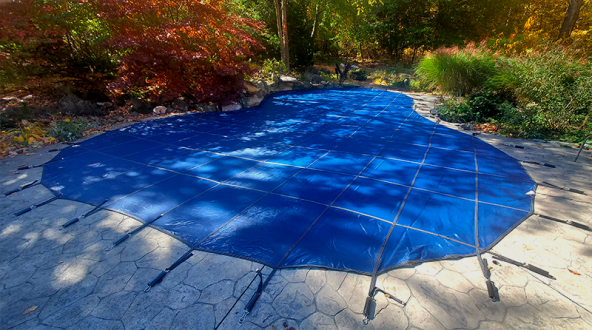Vinyl Liner Pools Vs. Concrete Vs. Fiberglass Pools
With so much information available on the internet, it’s tough to know which is the best pool. Vinyl liner pools vs. fiberglass pools vs. concrete pools: each has its advantages and disadvantages.
But, because each comparison online is often written by a pool company with a vested interest in the type of pools they sell, finding a balanced and holistic review of each pool can be challenging.
What’s more, pool technology is always evolving. With the need for pool installation services growing, finding an impartial review of the world’s latest pools can be tough.
We understand. The manufacturers at Kayden are here to help.
For more than 20 years, we’ve been providing businesses and dealers with high-quality pool products that meet the needs of both homeowners and pool dealers nationwide.
If you’re looking for an impartial, balanced review of vinyl liner pools, fiberglass pools, and concrete pools, you’ve come to the right place.
To help you understand the advantages and disadvantages of the market’s different types of pools, we’ll discuss:
- Why finding an impartial review of different pools can be so darn challenging
- The pros and cons of vinyl liner pools
- The pros and cons of fiberglass pools
- The pros and cons of concrete pools
- Our personal pool recommendation for pool dealers and homeowners
- Frequently asked questions (FAQ) about vinyl liner pools, fiberglass pools, and concrete pools
Let’s dive in!
Table: Vinyl liner vs. fiberglass vs. concrete pools
| Pros | Cons | |
| Vinyl liner pools |
|
|
| Fiberglass pools |
|
|
| Concrete pools |
|
|
The challenge of reviewing vinyl liner, fiberglass, and concrete pools
When looking at different reviews of pools, companies that sell pools usually have a vested interest in the review process. As such, finding an unbiased review can be a challenge.
Fortunately, Kayden doesn’t sell pools — only pool products. Therefore, we can give you an accurate and fair picture of what to expect with different pools.
To help you with your pool ownership journey, we’ll present the pros and cons of each type of pool product, including:
- Fiberglass pools
- Vinyl liner pools
- Concrete pools
All that’s left to do after that is make your decision; we leave that to you.
Fiberglass swimming pools: pros and cons
Fiberglass pools are manufactured off-site to resemble a shell. The giant shell is then delivered to a home and set in a pre-dug hole in the backyard.
Some of the advantages of fiberglass pools include:
- Quick and easy installation: since fiberglass pool shells are pre-fabricated, they can be installed, leveled, and backfilled in record time. A fiberglass pool shell can include pool steps, seats, ledges, rails, and even ladders.
- Low maintenance costs: the gel lining of the fiberglass pool is non-porous, meaning that algae will find it really tough to hold on to the pool’s edges.
- Minimal costs for pool chemicals or repairs: the gel coating and non-porous shell means the shell won’t absorb chemicals or react with pool water. The gel coating lasts long and fades very slowly. As a result, the cost of pool chemicals and repairs is less than with vinyl liner and concrete pools.
On the flip side, some of the disadvantages of owning a fiberglass pool include:
- Delivery limitations: the fiberglass pool shell must be delivered in one piece, so delivery can sometimes be tricky.
- Design limitations: Since a fiberglass pool is pre-fabricated, customers are limited to the types of pool designs that the pool dealer offers.
- Gel coating repair work is challenging: While gel coating is sturdy and lasts long, if the coating needs repairs, finding the right colored gel coating that matches the rest of the pool can be a challenge.
An introduction to vinyl liner inground swimming pools
Vinyl liner pools — often referred to as vinyl pools — are another type of inground swimming pool that’s built by digging a hole in the ground. The difference between a fiberglass pool and a vinyl liner inground pool is in how the structure is installed.
With vinyl liner pools, steel and polymer walls are built, and they’re then draped in a paper-thin vinyl lining. The lining is the inner wall of the pool, and the walls hold in the pool water.
Vinyl liner pools: pros and cons
Some of the advantages of vinyl liner pools include the following:
- Inexpensive and low start-up costs: when looking at fiberglass and vinyl liner pools, vinyl liner pools are less expensive. Vinyl liner pools are the cheapest type of pool to install.
- Less maintenance: A non-porous vinyl liner doesn’t absorb chemicals to the extent of other pools, making vinyl liner pools less expensive to maintain than, say, a concrete or gunite pool. With a vinyl liner pool, algae can’t grab hold of the pool’s walls, meaning you’ll spend less time maintaining walls than a concrete pool.
- More customization: vinyl liner pools allow for more customization than fiberglass pools. Few size constraints exist, since the liner is folded and therefore more compact through and upon delivery.
- Aesthetically pleasing: vinyl liners are soft and create a slick surface; the liners are very gentle on the feet.
The disadvantages of vinyl liner pool include:
- They’re more fragile: vinyl liners are about 20-30 thousandths of an inch thick, therefore tree branches, pointy objects, and sharp pet claws can puncture the lining. As such, the lifetime costs may be higher than a fiberglass pool.
- Few warranties are available: because liners are susceptible to tears, many warranties are prorated. Liners need to be replaced every five to seven years.
- They can be a liability if selling your home: Vinyl liner pools tend to have the lowest resale value of any of the pools on this list. If selling a home — and if a vinyl liner pool is a few years old — you may have to install a new liner before selling a home — or reduce the asking price of the home.
- Seams and wrinkles can occur: a vinyl liner can cause wrinkles. Algae can find their way into these wrinkles.
A brief introduction to concrete pools
Concrete pools are more involved than other pools on this list. As such, we figured we would dedicate a section to describe concrete pools.
To build a concrete pool, a contractor starts by digging a massive hole in the shape of the pool. Then, rebar is installed around the edges of the hole and in the bottom of the spot where the walls will be.
Concrete is poured into molds around the rebar to form the solid walls and flooring of the pool. Then, the concrete settles into the shape of the hole. The concrete is covered in plaster, gunite, tile, or a different type of finishing material.
Concrete pools: pros and cons
Some of the advantages of concrete pools include:
- Customizability: Compared to fiberglass pools and vinyl liner pools, concrete pools also offer some of the most customizability of the three types of pools mentioned in this article. Thought of an idea in mind for your new pool build? With concrete pools, the possibilities are endless. You and your pool-building team can sketch and build anything you can dream of.
- Extra add-ons are possible: beach entrances, tanning ledges, vanishing edges, cascades, fountains, jets, and more. With a concrete pool, adding these beautiful finishes is a breeze.
Some of the disadvantages of concrete pools include:
- Costs: As you can imagine, all the above-mentioned customization options come with a cost. Concrete pools aren’t cheap to build, and the initial cost of a concrete pool is more expensive than both fiberglass and vinyl liner pools.
- Takes time to install: Concrete pools take longer to install than fiberglass or vinyl liner pools.
- More maintenance is needed: Due to the porosity of concrete, concrete pools need more maintenance than other types of pools. With a concrete pool, expect to use more chemicals to keep water clean. Also, concrete pools require more vigorous and frequent scrubbing of pool walls with brushes and vacuums to ensure the pool is maintained and algae-free.
- More regular resurfacing is needed: due to the interaction between a concrete pool and its acid levels, you’ll need to resurface a concrete pool every seven years. You’ll also need to drain the pool once every ten years and acid wash the floors and walls of the pool.
Kayden’s recommendation for pools
The best type of swimming pool is the one that matches your needs. But, as a pool manufacturer, our recommendation is that you reach out to a pool dealer and pool manufacturer to learn how they build and construct pools.
If you need talking points to bring up with them, you can always reference what we talked about in this article, including:
- Fiberglass pools are quick to install and are easy to maintain, but have limited designs and models available.
- Vinyl liner pools are cheaper to install upfront, but are more fragile.
- Concrete pools offer the most customizability, but the maintenance of a concrete pool can add up.
Picking the right pool really comes down to how much you’re willing to splurge on swimming pool costs, what vision you have for your pool, and how you plan to use your new backyard swimming pool.
Pool businesses and homeowners: need help with your pool journey?
Finding the right tools, resources, and knowledge for caring for pools in terms of getting the most life from a vinyl pool liner or how to install a pool cover isn’t always straightforward.
Likewise, finding an unbiased review of different pool types can be a challenge.
Fortunately, the pool professionals at Kayden Manufacturing provide unbiased, straightforward answers to pool business owners and homeowners. The reason is that, depending on the pool, different solutions are needed.
And, since we build and sell pool products for all different types of pools, we’re more focused on providing you with holistic solutions that address every pool’s needs.
Whatever type of pool you choose, we’re here to help you make the most of it. For help with your pool journey, don’t hesitate to reach out to one of our knowledgeable pool manufacturing and advisory team members.
FAQ about vinyl liner pools, fiberglass pools, and concrete pools
How long does it take to install vinyl liner, fiberglass, and concrete pools?
Vinyl liner pools tend to take about four to 12 weeks to install from the time the hole in the ground is dug to swim day.
Fiberglass pools generally take anywhere from six to eight weeks from dig to swim, and concrete pools can take anywhere from 10 to 12 weeks from dig to swim.
What are the costs associated with installing each type of pool?
The exact price of a pool will depend on the size, features installed, and its design. In general, though, vinyl liner pools tend to be the most affordable option for pools, and concrete pools tend to be the most expensive.
With that being said, vinyl liner pools require more maintenance in the long term due to pool liner replacement costs.
What type of maintenance is involved with these three pools?
Whether working with concrete, vinyl liner, or fiberglass pools, you’ll want to budget for the following routine maintenance work:
- Regular brushing, sanitation, vacuuming, and chemical treatment
- For vinyl liner pools only: replacing the liner every five to seven years
- For concrete pools only: acid cleaning every three to seven years to remove mineral deposits, stains, and algae
- Skimming surfaces to remove residue, backwashing filters, water testing, and filter maintenance
P.S. – So, you actually read through this whole blog. And, we must apologize profusely for how nonsensical it may have seemed at times. But, you’re actually amazing.
You should really click on the link below and talk to us, because we’ll share just what you’re looking for in our time together. Thanks for reading. We just like to keep you on your toes.
More Helpful Content for You
10 Simple Pool Liner Cleaning/Care Tips to Keep Pool Liners Clean
A pool liner can last anywhere from five to 20…
6 Benefits of Being a Kayden Dealer
In the world of pool building and renovation, the products…
A Quick and Comprehensive Guide to How to Clean a Pool Cover
Keeping a pool maintained and serviced is a no-brainer. But,…

